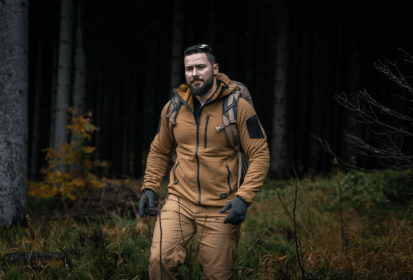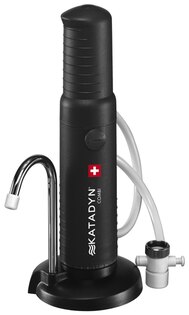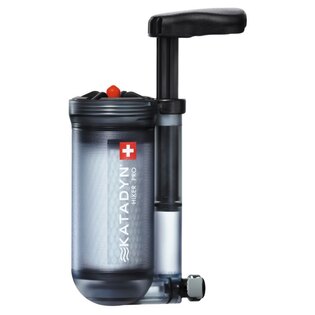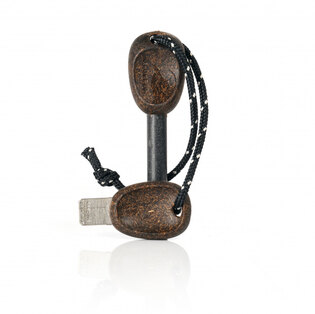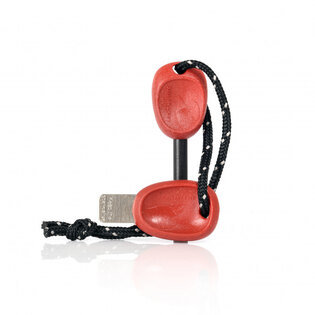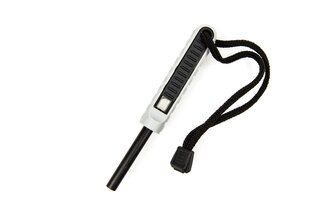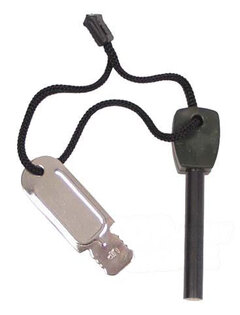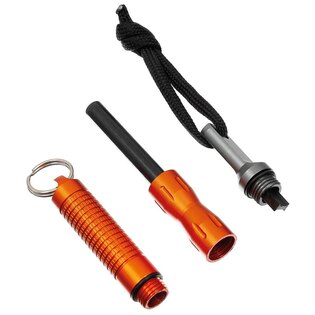6 Essential Outdoor Skills That Give You Confidence in the Wild
Building a fire, rigging a shelter or splitting a log with your knife – these aren’t party tricks for YouTube adventurers, but fundamental outdoor skills that make you feel calm and in control outside. With a simple Skill Ladder system you’ll see where you stand – and what you can actually do when things get real.
Can you get a fire going when everything around you is wet? Can you carve a tent peg that actually holds? You might remember some basic primitive skills from your scouting days, but they’re anything but outdated. They teach you how to get by in nature with minimal gear – and they’re genuinely fun to practice.
To keep your training from being random, there’s a simple way to progress in a structured way – the Skill Ladder. It helps you understand your current level and gives you a clear push to progress, step by step.
What Is the Skill Ladder?
The Skill Ladder breaks each skill into three levels based on difficulty and the conditions you can perform it in. It’s not a competition – it’s a tool to help you understand both your limits and your potential.
Skill Ladder levels:
🟢 Basic: you understand the principle and can do it with minimal gear.
🟡 Field: you can perform the skill in real conditions – wind, rain, fatigue.
🔴 Mission: you can improvise under pressure, in time-critical situations, when every move matters.
Every skill in this series has its own measurable task. That lets you test your level right away – and see clearly how you can move up.
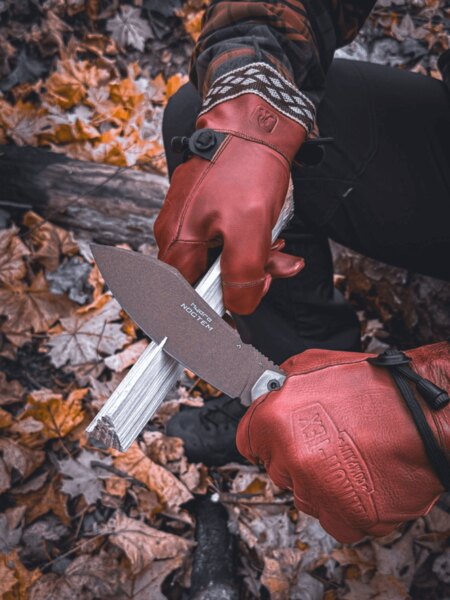
Practicing practical skills is the key to confidence in the field. Skill Ladder helps develop abilities step by step – from basic knife work to advanced improvisation in nature.
1) Fire Without a Lighter
Starting a fire without a lighter isn’t just a bushcraft flex. It’s a skill that tests your patience, ability to improvise and how well you can work with natural materials. And when technology fails, fire often becomes the deciding factor in both comfort and safety. It’s the simplest way to lift morale – from a damp morning with a mug of coffee to those moments when you need warmth and you simply don’t have another option.
💡 How to do it in practice
The foundation of a good fire is quality tinder. Fine, dry and prepared before you strike a spark. Birch bark, dry grass, fine shavings or a cotton pad dipped in wax all work remarkably well. Hold your sparks as close to the tinder as possible and pull the ferro rod backwards instead of dragging the striker forwards – most people actually blow their fire out before it catches by moving the rod the wrong way. Once you can light a fire even with slightly damp wood, you’re in a very good place.
Skill Ladder Levels – Firelighting
🟢 Basic: light dry tinder (e.g. birch bark or waxed cotton wool) without using a lighter.
🟡 Field: get a fire going in light rain – protect it from wind and moisture using rocks or branches.
🔴 Mission: after heavy rain, find dry material in the forest (under logs, in dead branches, etc.) and light a fire using only a ferro rod and natural tinder.
Test Yourself
Measurable task: Keep a stable flame going for at least 5 minutes – at every level.
Good to have: Ferro rod (fire steel), dry tinder, a waterproof container and a good dose of patience.
If you’re just starting out, practice first in “dry” conditions – without the pressure of bad weather.
Field tip: Prepare tinder before you need it. In the rain, it’s usually too late. Experienced bushcrafters always carry a bit of dry birch bark or waxed cotton wool in their pocket.

A flint is a reliable tool that works even in wet and cold weather. During training to start a fire without a lighter, you will learn to master one of the most important outdoor skills with it.
2) Shelter from a Tarp or Poncho
Being able to improvise a shelter isn’t just about comfort – it can have a real impact on your safety and morale. Weather in the mountains or forest can turn quickly, and being able to create a dry place to rest in a few minutes gives you certainty, calm and a big advantage. At the same time, you’re training exactly what turns an average hiker into a reliable partner: skill, improvisation and the ability to act calmly under pressure.
💡 How to do it in practice
Start with the right spot – ideally a flat area with some natural wind protection. Tension your tarp or poncho so it forms an A-frame or a simple lean-to angled away from the wind. When it’s raining, pitch the tarp at a slight angle so water runs off to the sides, not into the middle. If you’re using a poncho, think about drainage where the hood is and how quickly you can deploy and pack it again – when the weather shifts, speed really matters.
Skill Ladder Levels – Shelter Building
🟢 Basic: build a simple A-frame structure using natural materials.
🟡 Field: set up a shelter that can handle rain and offers real wind protection.
🔴 Mission: build a functional shelter at night or in low light, without the comfort of full daylight.
Test Yourself
Measurable task: Build a one-person shelter in under 10 minutes.
The goal isn’t perfection – it’s function. It should actually keep you protected.
Good to have: Poncho or tarp, paracord, carabiners, gloves and a knife.
If you’ve got more time, boost the basic setup using natural materials – branches, leaves, moss. You’ll add insulation and a lot more comfort.
Field tip: Always tension the tarp from the centre outwards so rainwater runs off to the sides.
And remember: the lower the profile of your shelter, the lower the chance the wind and rain will mess it up.
3) Sourcing and Treating Water
In the outdoors, drinking water is the most valuable resource you have. In the city, it’s a given – you turn the tap and that’s it. In the field, a lack of water quickly hits your performance, focus and decision-making. Knowing how to find and treat water is a core skill that decides whether you enjoy your trip or end up fighting exhaustion and thirst.
💡 How to do it in practice
You can get water from surface sources (streams, pools, snow) or from more hidden places – such as damp ground using improvised condensation. Whatever the source, always treat it. Even a clear spring can be contaminated by animals or soil. The basics are filtration and disinfection – using a portable filter, activated charcoal, or an improvised filter made from layers of sand, cloth and charcoal.
Skill Ladder Levels – Water Treatment
🟢 Basic: pre-filter water through cloth and charcoal – remove larger particles and improve the taste.
🟡 Field: combine a portable water filter with purification tablets – a proven solution for regular outdoor trips.
🔴 Mission: improvise a working filter using only natural materials around you (sand, charcoal, moss, cloth).
Test Yourself
Measurable task: Collect 2 litres of filtered water in under 20 minutes.
Try it in conditions where the water is murky or full of organic debris – that’s where you’ll really see if your method works.
Good to have: Portable filter (e.g. Sawyer, Katadyn or LifeStraw), purification tablets, collapsible bottle or water bladder, a piece of cloth and some charcoal from your fire.
Field tip: Assume you need to treat water almost every time – even a spring can be contaminated.
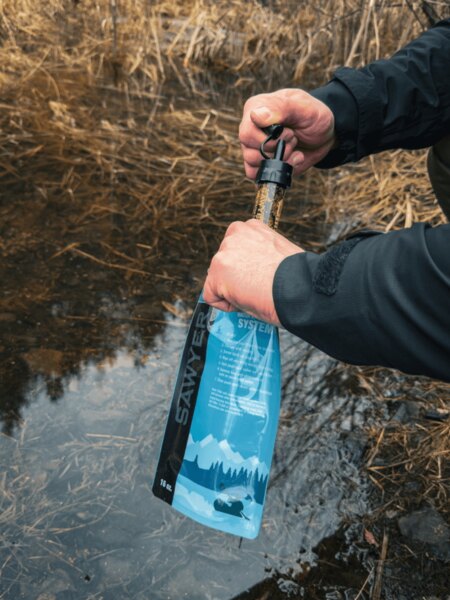
Proper water filtration is key for safe outdoor stays. Portable filters, like this Sawyer model, can remove impurities and microorganisms and provide drinking water practically anywhere.
4) Knots and Anchoring
Knots are one of the oldest skills humans used in the outdoors – yet they’re often overlooked today. Still, a properly tied knot is exactly what decides whether your shelter holds up in a gust of wind or collapses on your head. Knowing how to work with rope and anchors gives you stability, security and efficiency – not just when bivvying, but in everyday movement through the terrain.
💡 How to do it in practice
Start with a handful of simple but versatile knots. A clove hitch is ideal for quickly attaching a line to a branch or pole, a prusik knot is great for tensioning and adjustable attachments, and a sheet bend is perfect for joining two ropes. When you practice, focus on proper dressing and tightening of the knot, its orientation and how easy it is to untie – all of that matters in the real world. Practice tying knots blind or in gloves – only then will you know if you can truly rely on them.
Skill Ladder Levels – Knots and Anchoring
🟢 Basic: learn three key knots – prusik, clove hitch and sheet bend.
🟡 Field: build a shelter or gear hanger using ropes, branches and these knots.
🔴 Mission: hang 15 kg of gear without tent pegs or carabiners, using only knots and available materials.
Test Yourself
Measurable task: Tension a line between four different points in under 5 minutes.
Speed and confidence are crucial – in real conditions you often don’t have time to think through every step of a knot.
Good to have: Paracord, carabiners, quick-release buckles and a bit of space to practice.
If you’re serious about it, commit a few knots to “muscle memory” – it will pay off every time you pitch, tension or anchor gear.
Field tip: The best knot is the one you can tie quickly, securely – and even in gloves.
Experienced outdoorspeople say: any knot you have to Google first isn’t a knot you should be relying on.
5) Navigation Without GPS
Out in nature, phone signal is never guaranteed. When your battery dies or coverage drops, you’re on your own. Being able to navigate with a compass, map and your head gives you real freedom – it’s not about distrusting technology, but about knowing you’re not lost even when it fails. Navigating without GPS teaches you to read the landscape, think in context and see the terrain as something to understand, not just a line on a screen.
💡 How to do it in practice
Start simple: learn how to find the cardinal directions using the sun, shadows or a compass. Then grab a map, plan a route and try to walk it without using your phone – just with a compass. Pay attention to features: contour lines, streams, path junctions, ridges and valleys. These will keep you oriented even without devices. When night falls, switch your headlamp to red light – you’ll preserve your night vision and avoid blinding others.
Skill Ladder Levels – Land Navigation
🟢 Basic: determine the cardinal directions using a compass and the position of the sun.
🟡 Field: plan and walk a 1 km route by bearing, with a margin of error no greater than 50 metres.
🔴 Mission: navigate at night using only a map and red light – no phone, no GPS.
Test Yourself
Measurable task: Reach a designated point with an error of no more than 30–50 m.
If you can do that without checking your phone, you’ve got solid navigation skills.
Good to have: Compass, map in a waterproof case, headlamp with red light and a pencil for marking points.
On longer routes, keep short notes on direction and time – it makes backtracking and correcting your route much easier.
Field tip: Mark clear checkpoints so you always know where you were last.
Getting “lost” doesn’t start when you don’t know where you are – it starts when you stop paying attention to where you’ve been.
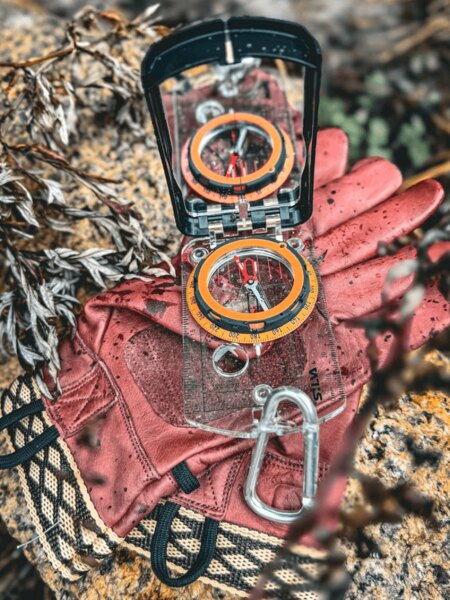
A reliable compass is essential for navigation without technology. It helps maintain direction, plan a route, and stay calm even in unfamiliar terrain – a skill that everyone spending time in nature should master.
6) Knife Skills
A knife is the most versatile tool you can take into the wild. It helps you start a fire, prepare food, build shelter and repair gear. But it also demands respect and practice – one bad move can turn a minor mistake into a serious problem, and that’s not something you want to deal with in the backcountry. Being able to use a knife safely and efficiently is a fundamental skill that separates beginners from seasoned bushcrafters.
💡 How to do it in practice
Begin with simple tasks – make some feathersticks for firelighting and pay attention to how the knife feels in your hand. For every cut, keep the edge moving away from your body, with a stable stance and confident grip. Then move on to more demanding techniques like batoning – splitting small logs using your knife and a wooden baton. Once you’ve got the feel for it, try carving a tent peg, hook or a simple tool from a branch.
Skill Ladder Levels – Knife Work
🟢 Basic: make feathersticks and kindling for firelighting.
🟡 Field: split a small log using your knife (batoning).
🔴 Mission: carve a tent peg or simple functional tool using only your knife.
Test Yourself
Measurable task: Make three feathersticks in under 10 minutes – without injury and with clean, controlled cuts.
Watch how your control and cut quality improve with each attempt.
Good to have: Fixed-blade knife, gloves and a small saw.
With fixed blades, avoid prying or dropping the knife onto hard surfaces – the steel is tough, but not indestructible. A quality knife will last for years if you treat it right.
Field tip: Always cut and chop away from your body and never with the blade above your knee.
When you need more power, brace the spine of the blade on a piece of wood and pull the material against the edge – not the other way around.
Safety isn’t luck – it’s habit.
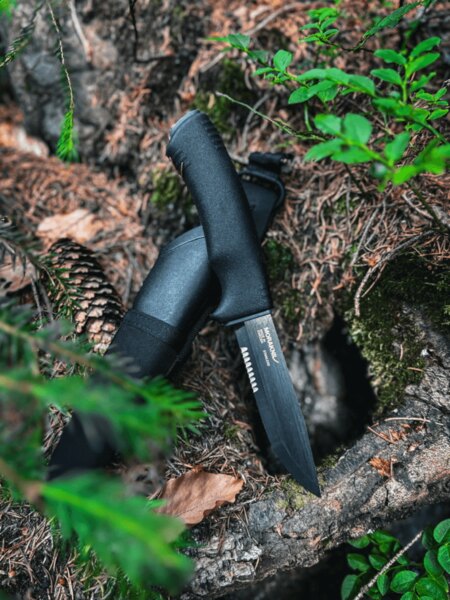
A quality knife is a key tool for most outdoor activities. It helps with wood preparation, shelter building, and minor equipment repairs – just handle it with respect and a steady hand.
In Conclusion: Train for Confidence
The six core skills we’ve covered aren’t just tricks for enthusiasts. They’re the building blocks of confidence in the outdoors – abilities that let you handle unpredictable situations with calm and composure. From firelighting to navigating without GPS, these are all “small things” that add up in the field.
Train step by step using the Skill Ladder.
Start with a simple task and move up. Each level will show you that this isn’t about competing with others – it’s about the inner calm that comes from experience and competence. Whether you’re heading out for a weekend hike or into real wilderness, these skills give you more than just the ability to “survive” – they give you freedom.
💡 Weekend challenge
Pick one skill from this article, try it in the field and find out where you are on your own Skill Ladder.
And if you want to go further, check out our selection of gear to support your training – from knives and ferro rods to water filters.
Readers are further interested

